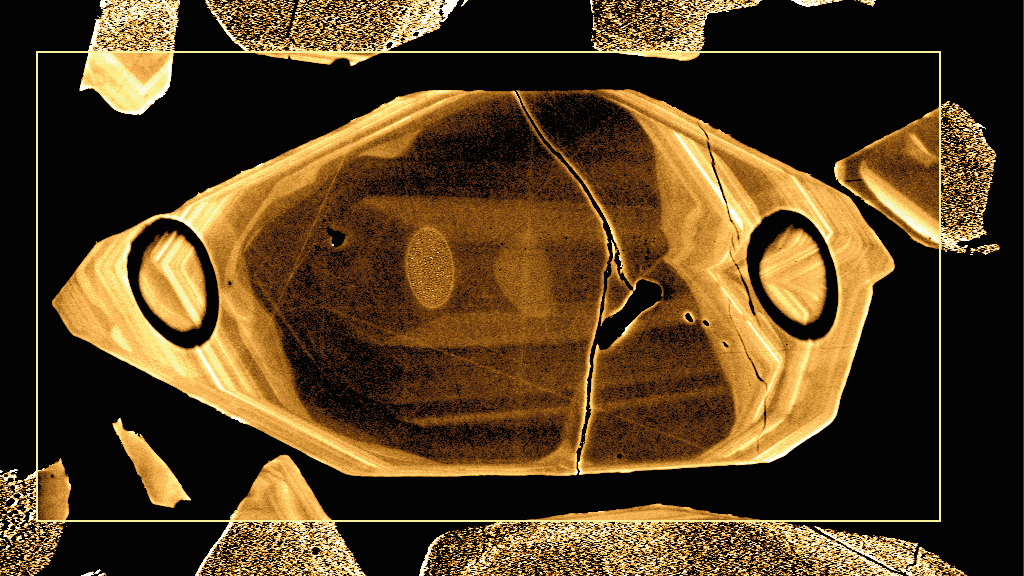The Potsdam Ion Microprobe (SIMS) User Facility
Contact:
Web:
Infrastructure belongs to:
The GFZ Helmholtz Centre for Geosciences operates a fully equipped, large geometry SIMS instrument, which is supported by a comprehensive spectrum of peripheral instrumentation. The SIMS laboratory is an open user facility intended to support the needs of the global geochemical community. Scientists from Europe and beyond are invited to contact us to discuss possibilities for collaboration. We strive to provide top-quality analytical data in and as rapid and uncomplicated means as possible.
Ion microprobes, also known as secondary ion mass spectrometers (SIMS), use a finely focused ion beam to probe a selected sample domain. A small percentage of the material sputtered from the polished surface of the sample is ionized, and these ions are accelerated into a mass spectrometer where they are separated according to their mass-over-charge ratio. An important characteristic of SIMS is its high sensitivity compared to other microbeam sampling techniques: The ability to count individual ions results in detection limits in the parts-per-billion range for many elements. Also the fact that ions derived from the sample are separated by their mass-over-charge ratio allows isotopic analyses to be performed on test portion masses that can be as small as 200 picograms.
Ion microprobes offer six modes of operation: Isotopic Analyses, Trace Element Analyses, Geochronology, Imaging, Depth Profiling, and Particle Search. The facility's core instrument is a Cameca 1280-HR mass spectrometer (s/n 23). More information on how to get access are given here.
Categories
Disciplinary Keywords
Instrumentation
Our facility's core instrument is a Cameca 1280-HR mass spectrometer (s/n 23) which was delivered in March 2013. It is equipped with a 5 trolley multi-collection system, which can have up to 5 electron multipliers or 5 Faraday cups. We also have a Resistive Anode Encoder for mapping the distribution of low concentration elements. We have an up-graded vacuum system, including oil-free roughing pumps, a vibration damped 550 l/s turbo pump on the sample chamber and an NMR field controller for high stability magnetic field control during multi-collection analyses. This instrument is housed in a thermally stabilized laboratory which has a temperature range of only +/- 0.3 C. For most applications instrument operation is done from an adjoining room via a desktop duplication system.
Instrument
-
Secondary Ion Mass Spectrometer
Secondary Ion Mass Spectrometers (SIMS) are mass spectrometric techniques that are useful for the identification of polymer surfaces and fiber/polymer interfaces by the detection of ionic group clusters that are characteristic of specific polymers. (Source: Global Change Master Directory (GCMD). 2023. GCMD Keywords, Version 16.3. Greenbelt, MD: Earth Science Data and Information System, Earth Science Projects pision, Goddard Space Flight Center (GSFC) National Aeronautics and Space Administration (NASA). URL (GCMD Keyword Forum Page): https://forum.earthdata.nasa.gov/app.php/tag/GCMD+Keywords)
Links
Key Publication
- GFZ German Research Centre for Geosciences. (2016). SIMS Lab Potsdam: Secondary Ion Mass Spectrometry Lab Potsdam. Journal of large-scale research facilities, 2, A71. http://dx.doi.org/10.17815/jlsrf-2-134
- Scicchitano, M. R., Wiedenbeck, M., Couffignal, F., Glynn, S., Wudarska, A., Trumbull, R., and Rocholl, A.: Analytical developments at the Potsdam SIMS user facility and the metrological limits on in situ isotope ratio data, EGU General Assembly 2023
Project Webpage
Relationships
- is part of
